| Anthrax picking up wood frass Egg-laying in Bombylidae is rather special. The following account is based on Stubbs & Drake, British Soldierflies and their allies. Females of many bee-flies have a special sand chamber in the tip of their abdomen, that can be filled with dust or sand. The eggs are coated with this, and while hovering the female flicks her eggs to the ground. The coating makes the eggs heavier, which might ease the flicking, and also reduces the risk of desiccation (N. Evenhuis, pers. com.). Females of various bee-flies can be seen taking sand into the chamber. This behavior is easily mistaken for oviposition behavior, as I did in case of this female Bombylius major. I observed a couple of females on sunny patches on a small path through a wood in Zuid-Limburg, the Netherlands (near Slenaken). They were touching the ground with their abdomen for quite some time. Their wings were either at rest, or shivering. |
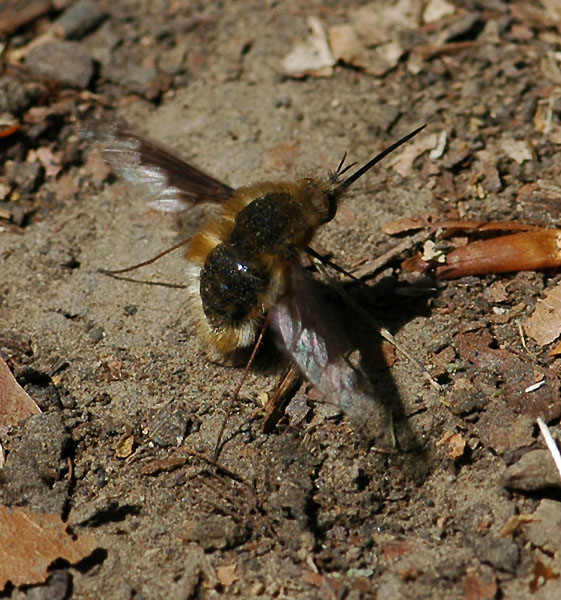 |
| I observed the same behaviour in a female Villa hottentotta this year in Switzerland, on a fully exposed rough road at ca. 1400 m altitude. |
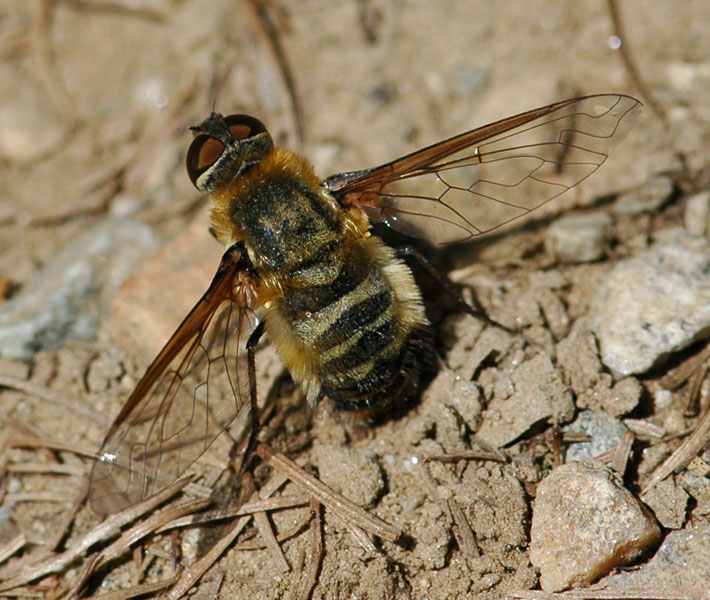 |
| Here I want especially to report a female Anthrax species, that was using wood frass instead of dirt or sand. The species has now been identified as Anthrax trifasciatus. I saw this bee-fly twice at piles of wood meant for burning. It was in the village Mavaglia, in Tessin, Switzerland. Date of observation 19 July 2007. |
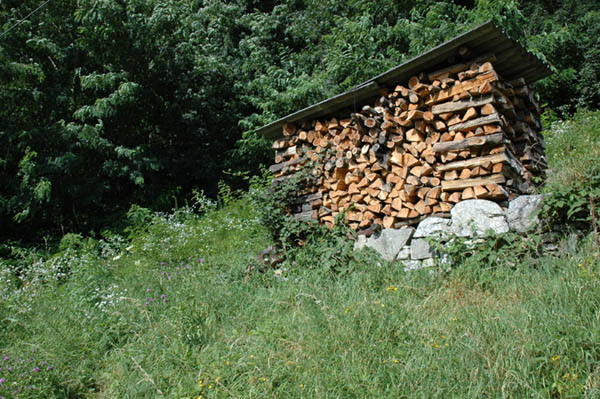 |
| This wood is extensively used by various insects for making nests. Close to it, you could continuously hear insects boring holes. This resulted in lots of wood frass, as can be seen in this photograph: |
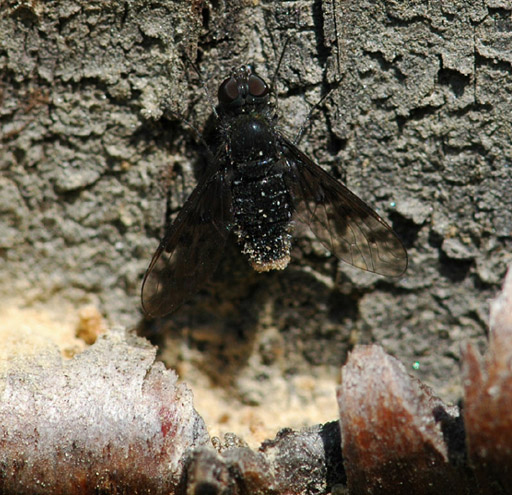 |
| The following photos show the bee-fly dipping her abdomen in saw dust. The behaviour seems very similar to that of Bombylius and Villa - yet with quite different material. Since the frass is very light weight, the idea that it makes eggs heavier so they are more easily flicked seems not very plausible. But dry frass seems not too well suited for preventing desiccation, too! Perhaps the fly does this to prevent the smell of eggs being noticed? |
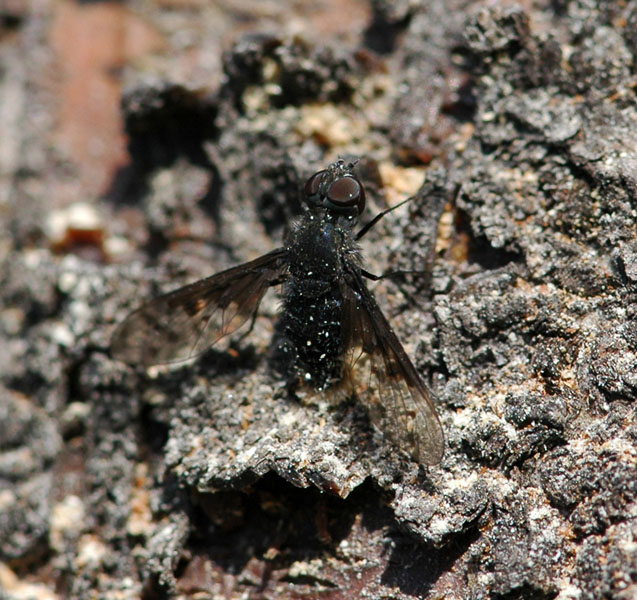 |
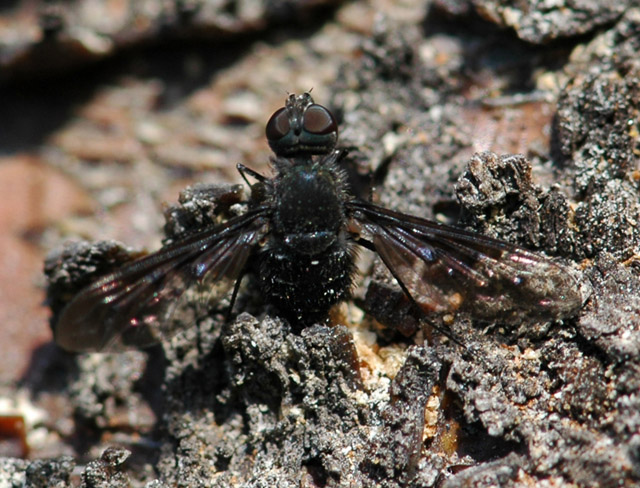 |
| As a result, the tip of the abdomen is coloured whitish, which I first thought to be the fly's natural colouration. |
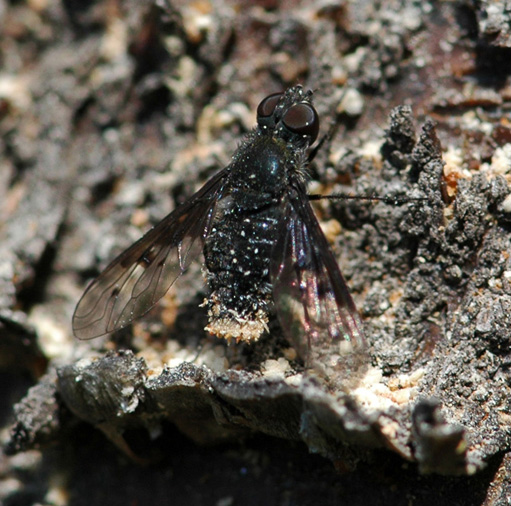 |
 |
||
|
||
 Users Online
Forum Threads
Newest Threads
· Unknown Stratiomyida...· Milichiidae?->Chloro... · Heleomyzidae ? · Ceratopogonidae (Ton... · Bibionidae: Bibio re... Hottest Threads
No Threads created
Theme Switcher
Last Seen Users
Latest Photo Additions
|
Anthrax picking up saw dust
Comments
Post Comment
Please Login to Post a Comment.
Ratings
Rating is available to Members only.
Please login or register to vote. No Ratings have been Posted.
| Date and time
Login
Temporary email?
Due to fact this site has functionality making use of your email address, any registration using a temporary email address will be rejected.
Paul Donate
Latest Articles
· Voltinism in Chaoborus
· Vitaliy Nikolaevich ... · Mating behaviour and... · Oviposition into the... · African Invertebrates Syrph the Net
License Agreement - Click to Download Public files of Syrph the Net can be downloaded HERE Last updated: 25.08.2011 Shoutbox
You must login to post a message. 17.08.23 15:23 Aneomochtherus
17.08.23 13:54 Tony, I HAD a blank in the file name. Sorry!
17.08.23 13:44 Tony, thanks! I tried it (see "Cylindromyia"
 but don't see the image in the post. but don't see the image in the post.17.08.23 11:37 pjt - just send the post and attached image. Do not preview thread, as this will lose the link to the image,
16.08.23 08:37 Tried to attach an image to a forum post. jpg, 32kB, 72dpi, no blanks, ... File name is correctly displayed, but when I click "Preview Thread" it just vanishes. Help!
23.02.23 21:29 Has anyone used the Leica DM500, any comments.
27.12.22 21:10 Thanks, Jan Willem! Much appreciated.
 19.12.22 11:33 Thanks Paul for your work on keeping this forum available!
Just made a donation via PayPal.
09.10.22 17:07 Yes, dipterologists from far abroad, please buy your copy at veldshop.
Stamps will be expensive, but he, the book is unreasonably cheap
 07.10.22 11:55 Can any1 help out with a pdf copy of
1941 Hammer. Vidensk. Meddel. Dansk Naturhist. Foren. 105;
thank you
|
|
images in Diptera Gallery and Forum of their respective owners Powered by PHP-Fusion copyright © 2002 - 2025 by Nick Jones. Released as free software without warranties under GNU Affero GPL v3. SimpleAsThat |
||
| Render time: 0.55 seconds | 200,323,730 unique visits | ||










